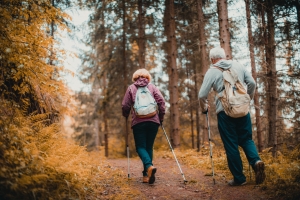Improve Muscle Function: Osteocalcin

Julia Basso – PhD
As we age, cognitive decline is a problem that many of us face. Though pharmacological interventions do not currently exist to help fix this issue, exercise has been shown to improve the way our brains function and therefore how we think and feel. However, an inherent problem to the “just exercise” solution is that as we age, our capacity for exercise declines. What if something existed that increased our ability to exercise as we age? Scientists have recently begun to explore this exciting topic.
Muscle Function and Exercise
During exercise, our muscles become activated and need glucose and fatty acids to function properly. However, until recently, it was unknown what exactly drives optimal muscle function. Mera and colleagues at the Department of Genetics and Development at Columbia University Medical Center sought to uncover the molecular mechanisms underlying this process (Mera et al., 2016). Interestingly, they turned to the skeletal system. In their paper, they state that “the ability of bone to sense mechanical forces, the physical proximity of the two tissues, and the fact that exercise capacity and bone mass decline at the same time have long suggested that a crosstalk between bone and muscle may exist.” As it was recently discovered that certain hormones are directly secreted from the bones, they turned to one in particular that is involved in metabolism and bone building: osteocalcin (Karsenty & Olsen, 2016).
Related Article: Exercise as a Stimulus for Bone Health
Circulating Osteocalcin
First, they found that circulating osteocalcin levels doubled after only one 45-minute exercise session in both young adult mice and men. Second, they found that during the aging process, osteocalcin levels in mice decreased by 70%, which was accompanied by a decreased ability to perform exercise. Further, they found that aging dampened the ability of exercise to increase circulating osteocalcin. Similar findings were found in monkeys and humans as well, indicating that this is a robust finding across species.
Based on these findings, they next asked whether exogenously administered osteocalcin could increase the capacity for exercise in young adult mice. What do you think happened? By injecting mice with osteocalcin immediately before exercise, their capacity to exercise significantly increased. That is, compared to controls, mice injected with osteocalcin increased their time spent running and distance traveled on a treadmill by over 20% before they reached exhaustion. These exciting findings led them to ask the same question in older mice with an already decreased capacity for exercise. What happened when older mice were injected with osteocalcin? They were able to run just as much as young mice, essentially “reversing the age-induced decrease in exercise capacity.”
Enhancing Exercise Capacity
They then used a genetic mouse model to determine that osteocalcin works to enhance exercise capacity by first being secreted by bone and then binding to receptors located on the muscle. This process of osteocalcin binding to the muscle causes a cascade of events to occur. First, osteocalcin breaks down stored glycogen into glucose, which the muscles use as an energy source during exercise. Second, osteocalcin promotes the uptake of both glucose and fatty acids, which the muscles also use as a source of energy. Collectively, these things cause activation of the Krebs cycle (think back to high school biology), which produces ATP (adenosine triphosphate) as its end product. ATP is referred to as the cell’s “energy currency”, and is required to increase muscle function.
Related Article: Brain Growth with Exercise
 Conclusions
Conclusions
The authors point out that, “These findings do not exclude in any way the likely possibility that other molecules may contribute to the regulation of adaptation to exercise.” However, it is exciting to begin to understand how exercise promotes muscular function. Even more exciting is the identification of molecular factors that can enhance muscle function as we age. Future research will be needed to determine whether osteocalcin supplementation can be used in aging humans to promote exercise capacity. Interestingly, a very recent study linked plasma osteocalcin levels to brain functioning in humans (Bradburn et al., 2016). This possible link between bone health and brain health warrants future research and is another exciting example of the brain-body connection.
References:
Bradburn, S., McPhee, J. S., Bagley, L., Sipila, S., Stenroth, L., Narici, M. V., … & Meskers, C. G. (2016). Association between osteocalcin and cognitive performance in healthy older adults. Age and Ageing.
Karsenty, G., & Olson, E. N. (2016). Bone and Muscle Endocrine Functions: Unexpected Paradigms of Inter-organ Communication. Cell, 164(6), 1248-1256.
Mera, P., Laue, K., Ferron, M., Confavreux, C., Wei, J., Galán-Díez, M., … & Bacchetta, J. (2016). Osteocalcin signaling in myofibers is necessary and sufficient for optimum adaptation to exercise. Cell Metabolism, 23(6), 1078-1092.
You Might Like:















